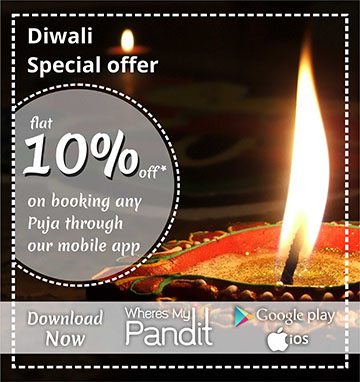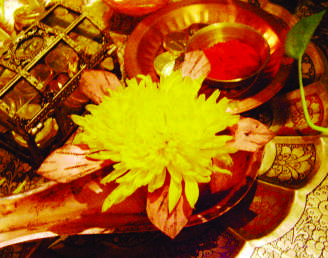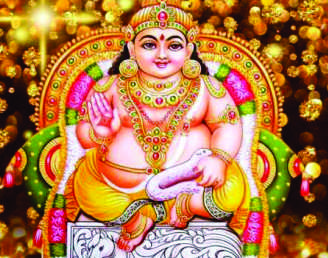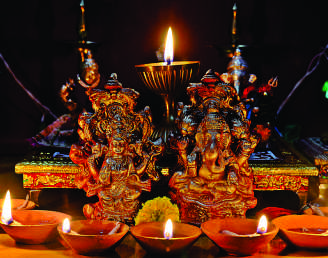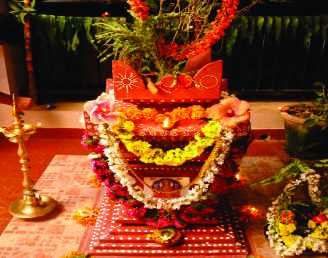One of the biggest festivals of India, Diwali is an occasion close to the heart of every Hindu. Also known as Deepavali, this festival not only has religious significance but is full of energy and pomp. Translated as the ‘Festival of Lights’, it is one of the most anticipated festivals of the year. Light is a representation of hope. Therefore, during this auspicious occasion of Diwali, the houses are kept well lit with divas and appropriate lightings. It is celebrated for five days. Diwali is not all about bursting crackers and lighting divas; it is more about finding peace within amidst chaos where good vanquishes evil. The festival of Diwali falls on a Sunday on the 30th of October.
~ ~ ~ Significance of Diwali ~ ~ ~
Diwali is significant in terms of glorifying the defeat of darkness by light; the triumph of intellect over ignorance; the collapse of evil in front of good, and the victory of aspiration over unhappiness. There is significance behind every custom of Diwali. Illuminating homes with light and bursting crackers is a way to show homage to the Gods and seek prosperity in all the spheres of life. The cracker sound is a symbol of displaying joy to the Deities for giving them life on earth. Lastly, it is a story of quenching the darkness within us and our homes and filling it with light. This is indicative of connecting with the divine good and letting go of bad habits and deeds.
~ ~ ~ History of Diwali ~ ~ ~
- Being one of the oldest religions in the world, there are many mythical stories associated with this day. One story suggests that the battle between Ram and Ravan ensued for the longest time after he captured Ram’s wife, Sita. Diwali is said to be the period when Ram returned victorious with Lakshman and Sita to his hometown of Ayodhya and was welcomed with open arms by the villagers.
- Others stories insinuate as it being the occasion when Goddess Lakshmi came out as one of the 14 most precious things from the depths of the ocean during the Samudra Manthan.
- The ruler of Nepal, Narakasur became drunk with power and started mistreating people. He happened to behave unruly with Lord Krishna’s relative. It is said, that the occasion of Diwali is celebrated when Krishna helped Satyabhama and Kali vanquished Narakasur.
- Additionally, it is said that after facing defeat at the hands of the Kauravas, the Pandavas were sentenced to a 13-year exile. They are believed to have completed their exile and returned to their home on this day.
~ ~ ~ Diwali Rituals ~ ~ ~
- The first day of this festival is known as Dhanteras. It commences with the cleaning of the house and making rangolis at the entrance of the homes. Shopping is followed by Lakshmi Puja in the evening.
- The second day is known as Choti Diwali or Naraka Chaturdashi. It celebrates the victory of Kali, Krishna and Satyabhama over the evil Narakasur demon. It is the day where the powerful Goddess Kali is worshipped.
- The third day is considered to be the main day of Diwali where Lakshmi Puja is performed. Other deities worshipped are Lord Kuber, Goddess Saraswati and Lord Ganesh.
- The fourth day is celebrated as Padwa, which celebrates the devotion between married couples. Many performed the Govardhan Puja in honour of Lord Krishna.
- The last day is known as Bhai Dooj, which celebrates the love between siblings. It’s somewhat like Raksha Bandhan but follows different rituals.
~ ~ ~ Regional variation ~ ~ ~
- This festival of revelry is not as popular in the South as it is in the North. Hyderabad, Delhi and Mumbai are the places where the firecrackers burst the loudest in the night.
- Kolkata and Chennai partake in average Diwali celebrations.
- Chennai and Tamil Nadu give more preference to Narak Chaturdashi than Lakshmi Puja.
- Although the third day is prominent for Lakshmi puja; Kolkata and West Bengal give more preference to Goddess Kali.
~ ~ ~ Diwali Celebration ~ ~ ~
One of the most awaited festivals in India, the preparation of Diwali begins way in advance. From shopping for new clothes to purchasing gifts for loved ones, the proportion ends with a complete cleaning of the house. As the festival nears, people start making beautiful rangolis at their entrance. On Diwali, people wear new clothes and keep their house well illuminated. Diyas are placed in every corner of the room and lots of delicacies are prepared. Lakshmi Puja is the main Diwali puja where Goddess Lakshmi is revered with utmost dedication. Lastly, it is the day of crackers where the light and sound can be felt in every part of the country.
~ ~ ~ Diwali festival timing and dates in 2016 ~ ~ ~
| Dates | Important Occasions |
| 27th October | Dhanteras |
| 29th October | Narak Chaturdashi |
| 30th October | Diwali : Lakshmi Puja |
| 31st October | Govardhan Puja, New Year |
| 1st November | Bhaiya Dooj |
~ ~ ~ Diwali Shubh Muhurat ~ ~ ~
The most auspicious time for perform the Lakshmi Puja during Diwali is:
| Morning (Labh Amrit) | 09:35am to 12:21pm |
| Afternoon (Abhijit Vela) | 11:59am to 12:43pm |
| Afternoon (Shubh Vela) | 01:44pm to 03:07pm |
| Evening (Vrish Lagna) | 06:48pm to 08:45pm |
